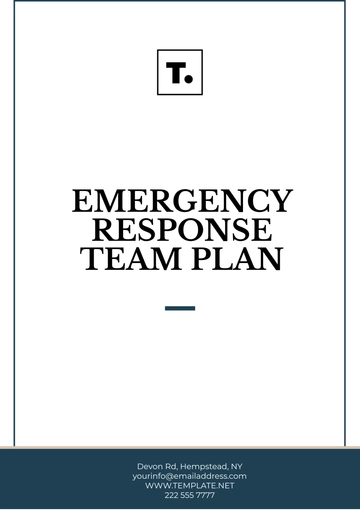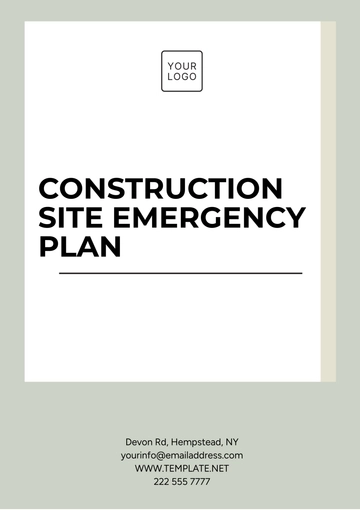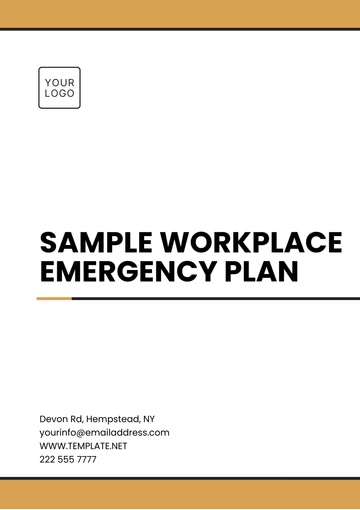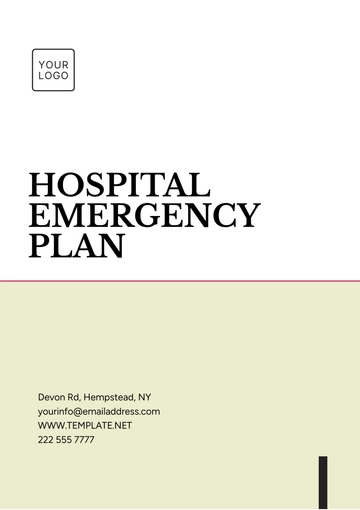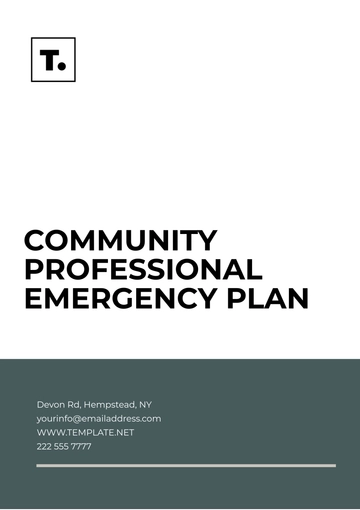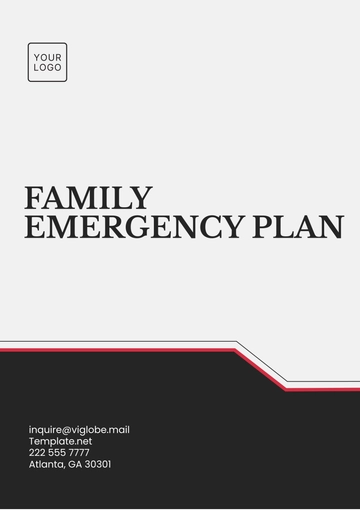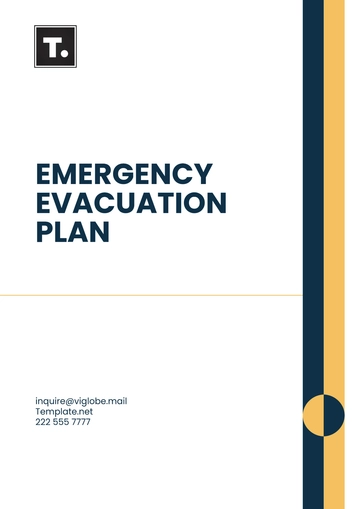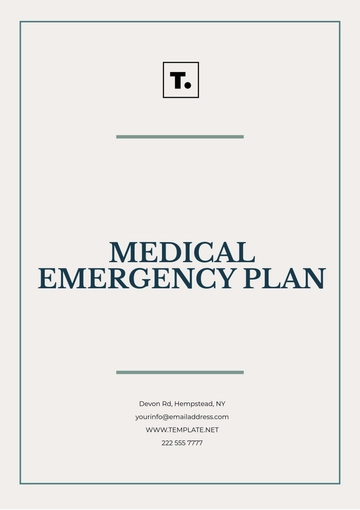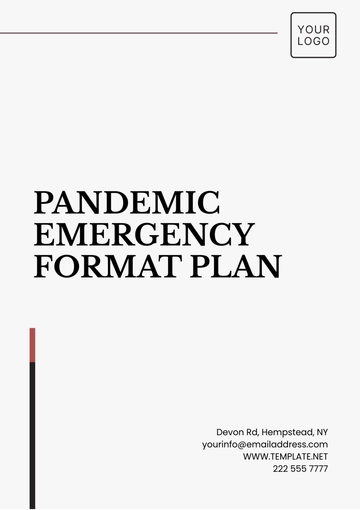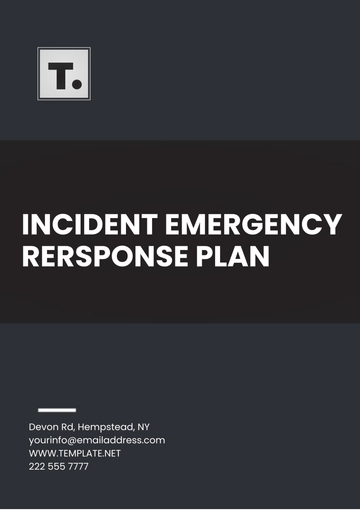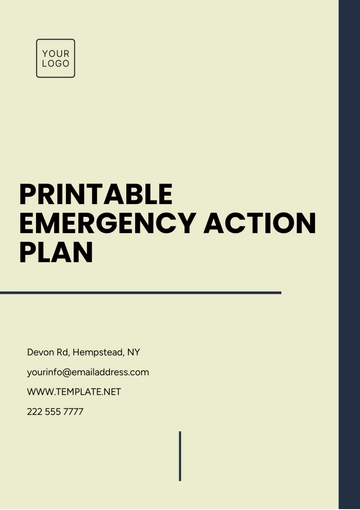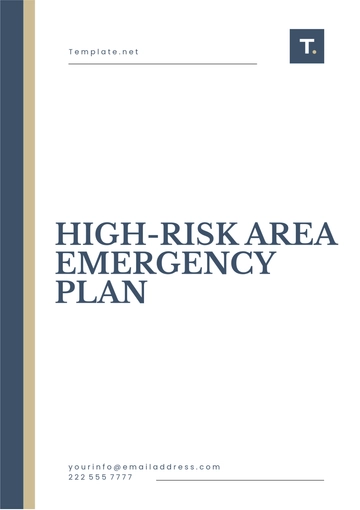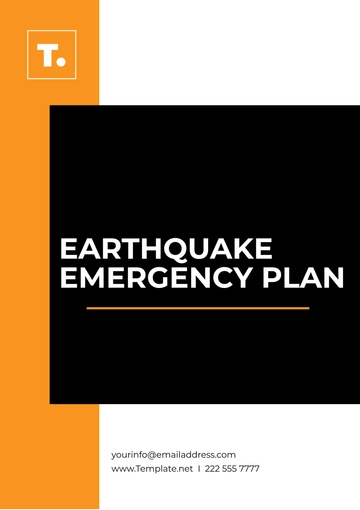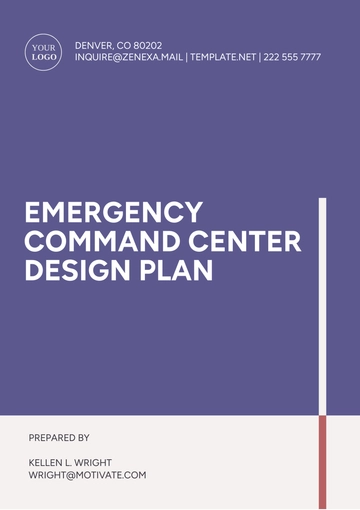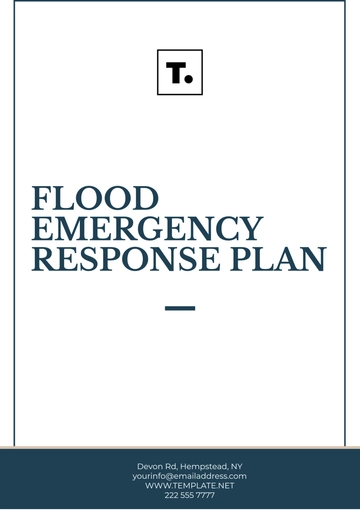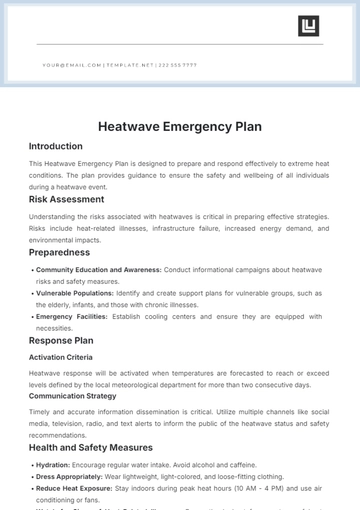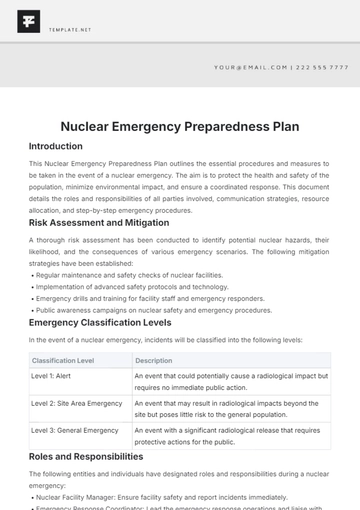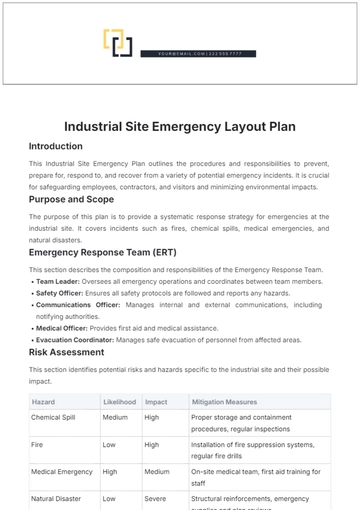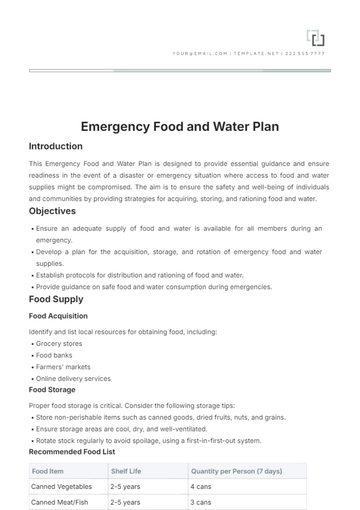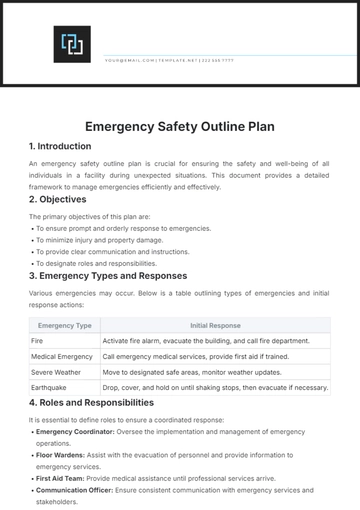Free Flood Emergency Response Plan
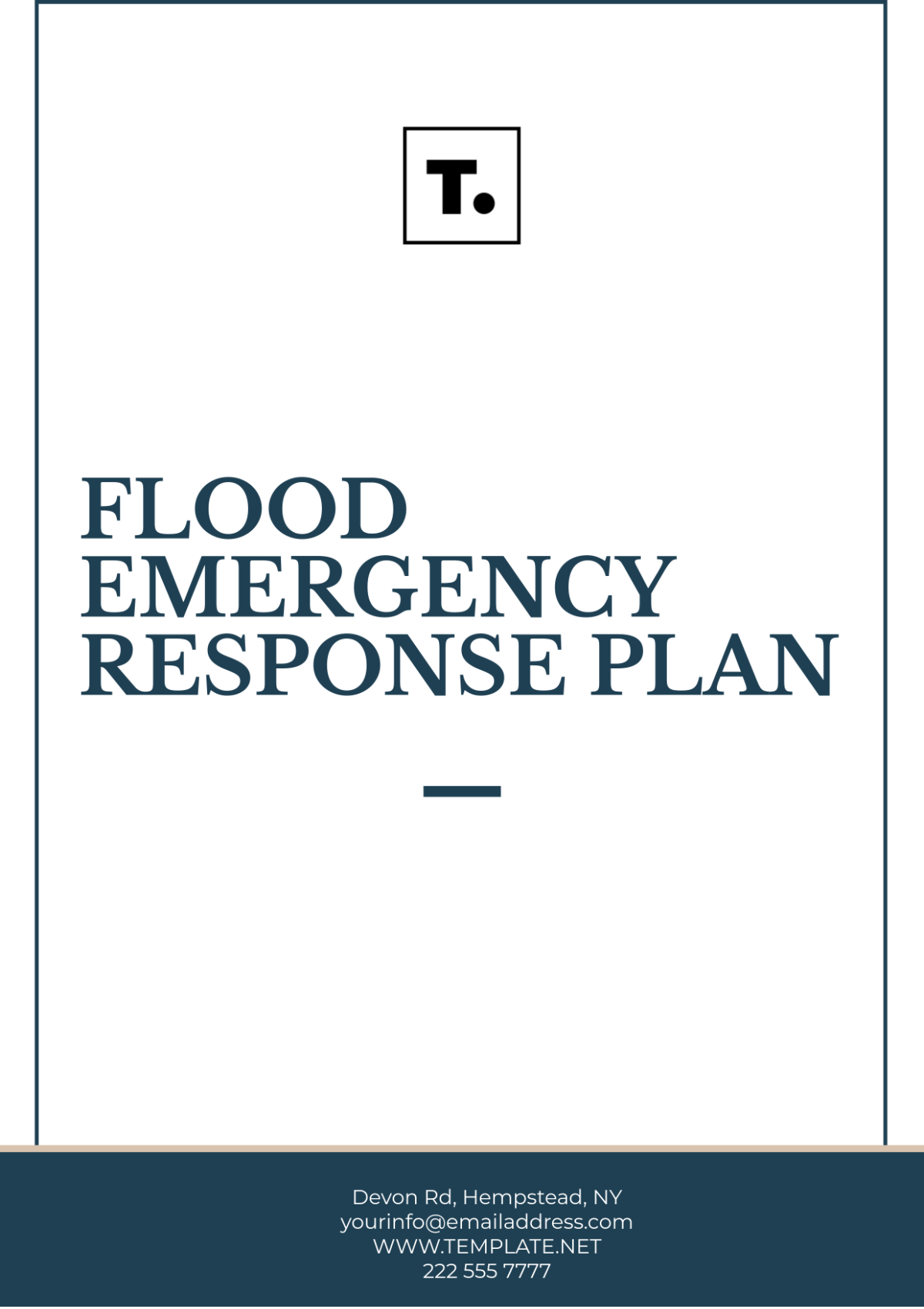
Introduction
This Flood Emergency Response Plan is designed to safeguard the well-being of people, minimize damage to property, and ensure a structured and efficient response to flood situations. The plan outlines roles, responsibilities, and actions required before, during, and after a flood incident.
Objectives
To prioritize the safety and health of individuals affected by floods.
To mitigate damage to buildings and infrastructure.
To establish a clear communication strategy for flood response activities.
To ensure timely and effective deployment of resources during flood events.
Scope
This plan applies to all staff, emergency personnel, and stakeholders involved in flood preparedness and response within the designated flood-prone areas.
Key Roles and Responsibilities
Role | Responsibilities |
|---|---|
Emergency Coordinator | Oversees the implementation of the Flood Emergency Response Plan, coordinates between different teams, and communicates with local authorities. |
Communications Officer | Maintains information flow, handles media inquiries, and ensures public awareness through updates. |
Logistics Team | Manages the provision of supplies, transportation, and emergency equipment during floods. |
Search and Rescue Team | Responsible for locating and evacuating individuals in distress, providing first aid, and transporting people to safe areas. |
Preparedness Activities
Conduct risk assessment and hazard mapping to identify flood-prone areas.
Establish flood warning systems and disseminate information to the public.
Organize training and drills for emergency personnel and the community.
Ensure availability of necessary resources and equipment for flood response.
Response Actions
Before a Flood
Activate flood warning systems and alert residents in vulnerable areas.
Set up emergency shelters and ensure their readiness to receive evacuees.
Pre-position resources such as sandbags, pumps, and emergency food supplies.
During a Flood
Monitor flood conditions and provide regular updates to the public.
Deploy the search and rescue team to affected areas as needed.
Coordinate the evacuation to safe locations if necessary.
After a Flood
Assess the damage to infrastructure and initiate repair and restoration activities.
Provide assistance to affected individuals in terms of food, water, and shelter.
Conduct a debrief to evaluate response effectiveness and identify improvement areas.
Communication Protocol
Effective communication is vital during a flood emergency. This includes clear dissemination of warnings, guidance to the public, and coordination with response teams. The Communications Officer will act as the central point for all media interactions and public announcements.
Resource Management
Managing resources effectively is crucial for a timely response. This involves inventorying available equipment, coordinating logistics for distribution, and identifying additional needs to handle the emergency efficiently.
Training and Drills
Regular training and drills ensure preparedness of personnel and the community at large. These exercises help identify potential gaps in the response plan and allow for continual improvement in procedures.
Conclusion
By following the strategies outlined in this Flood Emergency Response Plan, we aim to enhance our preparedness and response capabilities. Cooperation among all stakeholders and community involvement is essential to mitigate the impact of flood emergencies.
- 100% Customizable, free editor
- Access 1 Million+ Templates, photo’s & graphics
- Download or share as a template
- Click and replace photos, graphics, text, backgrounds
- Resize, crop, AI write & more
- Access advanced editor
Stay prepared for floods with Template.net's Flood Emergency Response Plan Template. This editable and customizable tool provides a comprehensive framework for swift action. Tailor protocols effortlessly with our Ai Editor Tool, ensuring readiness for any flood scenario. Trust Template.net for effective solutions in emergency preparedness.
You may also like
- Finance Plan
- Construction Plan
- Sales Plan
- Development Plan
- Career Plan
- Budget Plan
- HR Plan
- Education Plan
- Transition Plan
- Work Plan
- Training Plan
- Communication Plan
- Operation Plan
- Health And Safety Plan
- Strategy Plan
- Professional Development Plan
- Advertising Plan
- Risk Management Plan
- Restaurant Plan
- School Plan
- Nursing Home Patient Care Plan
- Nursing Care Plan
- Plan Event
- Startup Plan
- Social Media Plan
- Staffing Plan
- Annual Plan
- Content Plan
- Payment Plan
- Implementation Plan
- Hotel Plan
- Workout Plan
- Accounting Plan
- Campaign Plan
- Essay Plan
- 30 60 90 Day Plan
- Research Plan
- Recruitment Plan
- 90 Day Plan
- Quarterly Plan
- Emergency Plan
- 5 Year Plan
- Gym Plan
- Personal Plan
- IT and Software Plan
- Treatment Plan
- Real Estate Plan
- Law Firm Plan
- Healthcare Plan
- Improvement Plan
- Media Plan
- 5 Year Business Plan
- Learning Plan
- Marketing Campaign Plan
- Travel Agency Plan
- Cleaning Services Plan
- Interior Design Plan
- Performance Plan
- PR Plan
- Birth Plan
- Life Plan
- SEO Plan
- Disaster Recovery Plan
- Continuity Plan
- Launch Plan
- Legal Plan
- Behavior Plan
- Performance Improvement Plan
- Salon Plan
- Security Plan
- Security Management Plan
- Employee Development Plan
- Quality Plan
- Service Improvement Plan
- Growth Plan
- Incident Response Plan
- Basketball Plan
- Emergency Action Plan
- Product Launch Plan
- Spa Plan
- Employee Training Plan
- Data Analysis Plan
- Employee Action Plan
- Territory Plan
- Audit Plan
- Classroom Plan
- Activity Plan
- Parenting Plan
- Care Plan
- Project Execution Plan
- Exercise Plan
- Internship Plan
- Software Development Plan
- Continuous Improvement Plan
- Leave Plan
- 90 Day Sales Plan
- Advertising Agency Plan
- Employee Transition Plan
- Smart Action Plan
- Workplace Safety Plan
- Behavior Change Plan
- Contingency Plan
- Continuity of Operations Plan
- Health Plan
- Quality Control Plan
- Self Plan
- Sports Development Plan
- Change Management Plan
- Ecommerce Plan
- Personal Financial Plan
- Process Improvement Plan
- 30-60-90 Day Sales Plan
- Crisis Management Plan
- Engagement Plan
- Execution Plan
- Pandemic Plan
- Quality Assurance Plan
- Service Continuity Plan
- Agile Project Plan
- Fundraising Plan
- Job Transition Plan
- Asset Maintenance Plan
- Maintenance Plan
- Software Test Plan
- Staff Training and Development Plan
- 3 Year Plan
- Brand Activation Plan
- Release Plan
- Resource Plan
- Risk Mitigation Plan
- Teacher Plan
- 30 60 90 Day Plan for New Manager
- Food Safety Plan
- Food Truck Plan
- Hiring Plan
- Quality Management Plan
- Wellness Plan
- Behavior Intervention Plan
- Bonus Plan
- Investment Plan
- Maternity Leave Plan
- Pandemic Response Plan
- Succession Planning
- Coaching Plan
- Configuration Management Plan
- Remote Work Plan
- Self Care Plan
- Teaching Plan
- 100-Day Plan
- HACCP Plan
- Student Plan
- Sustainability Plan
- 30 60 90 Day Plan for Interview
- Access Plan
- Site Specific Safety Plan

